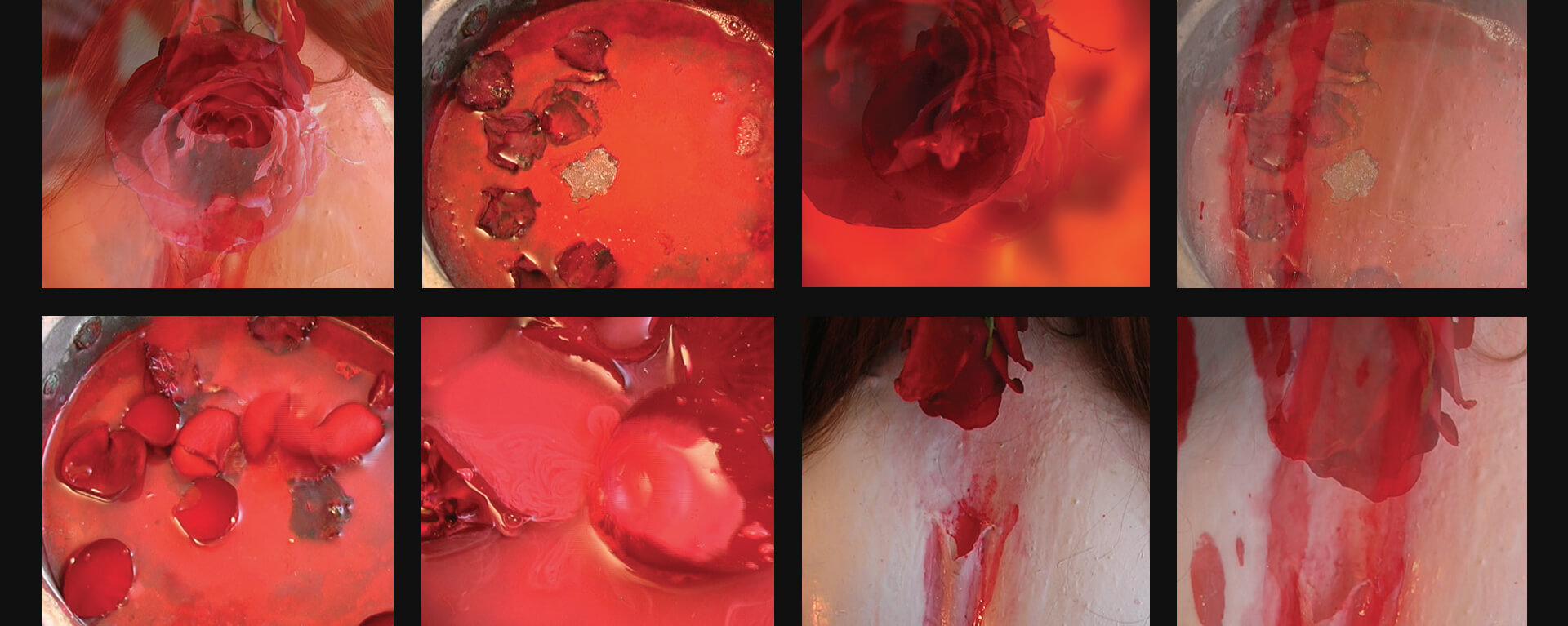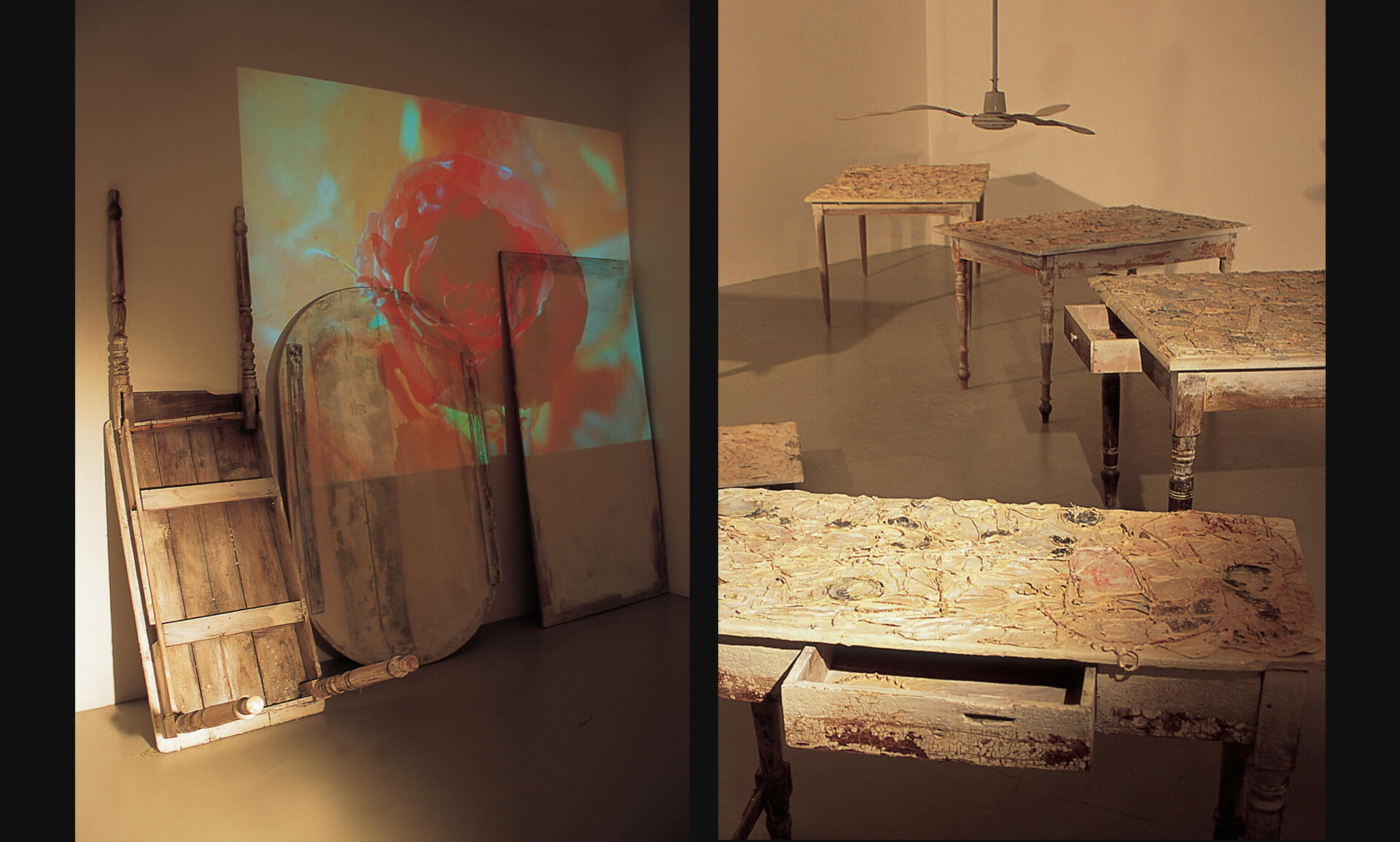Traces of Memory
Multimedia Installation, latex, pots, roses tables, video projection, sound, roses
Dimensions Variable
2002
[…] Climbed up vertical oblong lines, the roses compose a barrier, a stage that obstructs the view and divides the space in two. On the floor, a line of vessels accentuates this division further, but more importantly introduces us to an element of varied interpretations. Plates, pots and pans which appear to have been placed there in order to gather the mood that may be shed by the series of roses, seem to imply some old popular tradition, or some mysterious expiation ritual, the meaning of which we no longer understand. The chasm between the familiarity of the objects, which we identify immediately, and the complexity of this bizarre situation for which we cannot find a truthful explanation in our daily experience, intensifies the spectacular result of the stage, but also conveys a subtle psychological tension, distress and discomfort.
The wall of roses creates a screen, beyond which we can make out a whole other environment. Our desire for open space, which urges us to break through the obstacle of the wall of roses, is destined to frustrate us. Here, time has stopped along with the still fan. The tables with their open drawers look as if they turned to stone, and on their tortured surfaces reveal a multitude of traces, imprints, marks aligned in layers wishing to voice - who knows what - personal issues for ever left in the shadow. We are only certain that somewhere along the line, the great tragedies of history and hope became entangled, just like it always happens in the lives of men. And thus these objects with the marks they bear on their skin, in this desolate space, have an incredibly ostensible testimony, an opaque density which makes them endure the transparency of language and fortifies them with a capability of vivid and strong vagueness. […] Antoniou’s focus on the body and the “skin” of things, has a double effect in her work: their inclination to gather and record on their surface the marks of time, the Traces of Memory, and to then suggest, without a doubt, the notion of duration and lingering in time. Yet, this is not a mere introduction to the fragments of the past in the present, but more of the co-existence of various times, a disorientating mixture for those who believe that the facts of life and art proceed in a military parade of ancient scents, the smell of mould and unrecorded fragrances. It is, in essence, the feeling of our fragile existence which brings us together and which differentiates one thing from another, which nourishes our hopes and fears and which keeps us alive while our bodies disintegrate. Since the body “is the surface upon which happenings are recorded”, as Foucault wrote, “and where desires, metaphors and mistakes are born, exactly where they get tangled up and find expression, or even become untangled and start fighting each other or even where facts hide from one another.”[…] (Vitaliano Corbi, Art critic, La Republica Newspaper, Italy)



